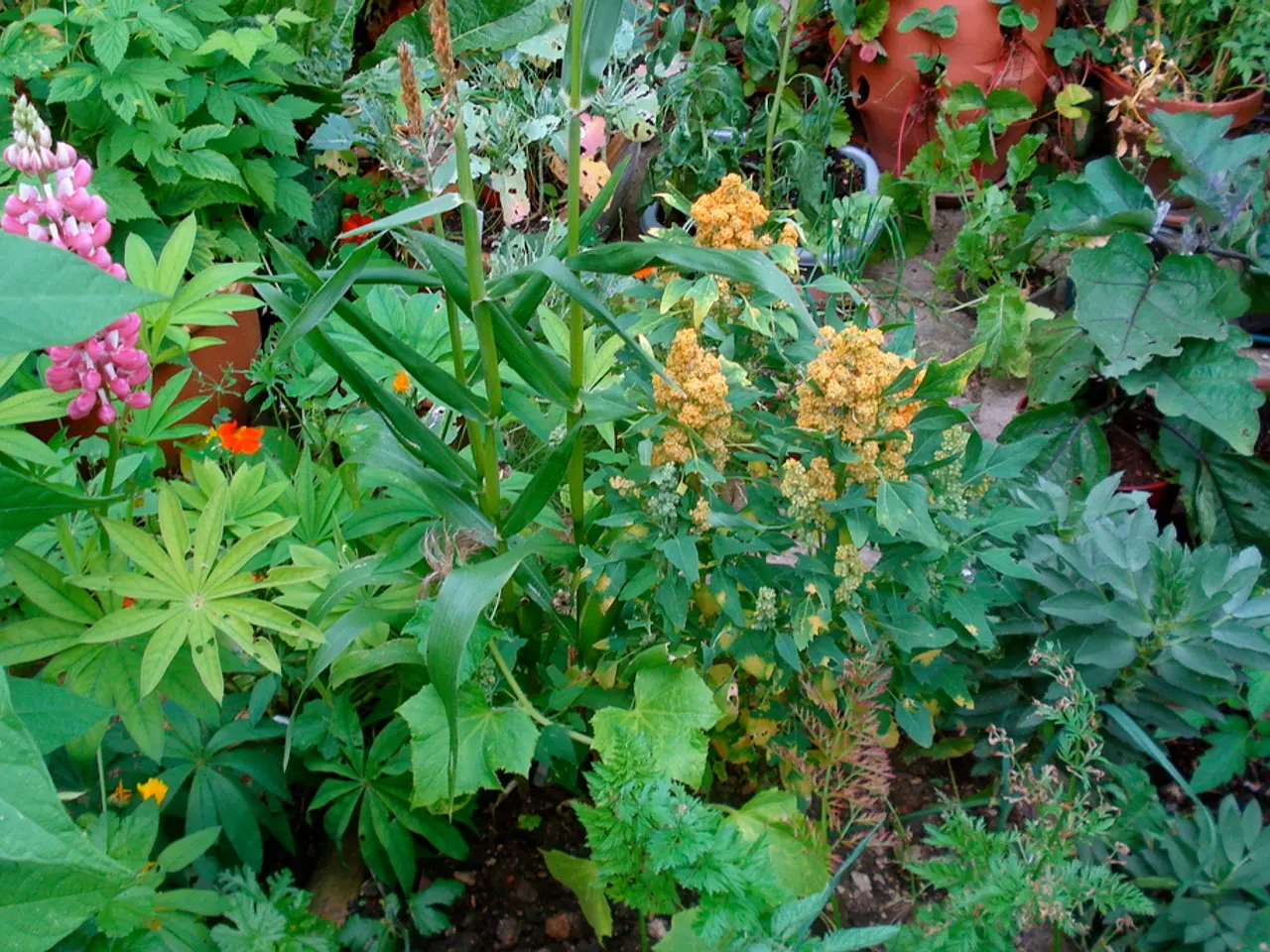Avoid placing such objects on the property. Investigate potential problems she may instigate.
The evergreen Thuja, also known as arborvitae, is a popular choice in gardens for its versatile growth and decorative qualities. However, this plant is surrounded by controversy, with benefits and potential risks to both plant health and human health, as well as cultural superstitions that add an intriguing layer to its presence in gardens.
Benefits of Thuja
Thuja occidentalis can thrive in full sun and tolerate partial shade, making it adaptable to many garden settings [1]. As a fast-growing, dense evergreen, it serves effectively as a privacy screen, reducing noise, wind, and adding seasonal interest with striking bark in winter [3]. Additionally, Thuja hedges can provide shelter for birds and beneficial insects [3].
Risks to Plant Health
Despite its advantages, Thuja is susceptible to fungal diseases in wet conditions or overwatering, which may cause aesthetic damage or stress to the plant if unmanaged [5]. Furthermore, Thuja can experience stress when planted or moved, particularly under extreme weather conditions. Planting in milder weather reduces this risk [2].
Potential Risks to Human Health
Thuja contains compounds such as thujone that are mildly toxic if ingested in large quantities, potentially causing skin irritation or respiratory reactions in sensitive individuals, especially when handling or pruning. However, such effects are generally limited with normal garden use.
Superstitions and Cultural Associations
Thuja has been traditionally associated with protection and warding off evil spirits in some cultures. It is sometimes planted near graves or homes to protect against negative influences. Conversely, in certain folk beliefs, planting Thuja too close to a house is thought to invite bad luck or gloomy atmospheres, though these are cultural beliefs without scientific basis.
Interestingly, there is a belief that a young woman who plants a thuja will never marry or have children. These superstitions, while not scientifically proven, influence people's perception of this plant.
Thuja as a Living Fence
Thuja is also used for creating living fences due to its dense crown and resilience to pruning. Landscape designer Oksana Sadova mentions the decorative qualities and some useful properties of thuja, but emphasizes the importance of careful placement. It's better to choose a separate, distant spot where thuja won't compete with other plants and won't harm structures.
Fruit Trees and Thuja
Flowers and vegetables planted nearby often suffer from nutrient deficiency when Thuja is present due to its aggressive and shallow root system, which spreads and suppresses neighboring plants [6]. This is a concern that gardeners should consider when deciding to plant Thuja in their gardens.
In summary, planting Thuja is generally beneficial for landscape privacy and wildlife, with manageable risks to plant health if conditions favor fungal growth. Human health risks are minor if standard horticultural precautions are observed. Cultural superstitions vary, but they add an interesting layer to Thuja’s symbolic presence in gardens. It's essential to consider these factors when deciding whether to incorporate Thuja into your garden design.
[1] Thuja occidentalis - Sun Exposure. (n.d.). Gardening Know How. Retrieved from https://www.gardeningknowhow.com/plant-medicine/herbs/thuja/thuja-occidentalis-sun-exposure.htm
[2] Planting Thuja. (n.d.). The Spruce. Retrieved from https://www.thespruce.com/planting-thuja-arborvitae-2132845
[3] Thuja Occidentalis. (n.d.). Missouri Botanical Garden. Retrieved from https://www.missouribotanicalgarden.org/PlantFinder/PlantFinderDetails.aspx?kempercode=t561
[4] Thuja Occidentalis - Care and Maintenance. (n.d.). Gardening Know How. Retrieved from https://www.gardeningknowhow.com/ornamental/trees/thujas/thuja-occidentalis-care-and-maintenance.htm
[5] Thuja Occidentalis - Diseases and Pests. (n.d.). Gardening Know How. Retrieved from https://www.gardeningknowhow.com/ornamental/trees/thujas/thuja-occidentalis-diseases-and-pests.htm
[6] Thuja and Nutrient Deficiency. (n.d.). Garden Myths. Retrieved from https://www.gardenmyths.com/thuja-and-nutrient-deficiency/
Thuja's adaptable growth and decorative qualities make it suitable for numerous home-and-garden settings, such as property boundaries, home-and-garden landscapes, and home-and-garden privacy screens due to its fast-growing, dense evergreen nature. But be mindful of the potential risks it may pose to neighboring fruit trees and vegetables, as its aggressive root system can cause nutrient deficiency.




